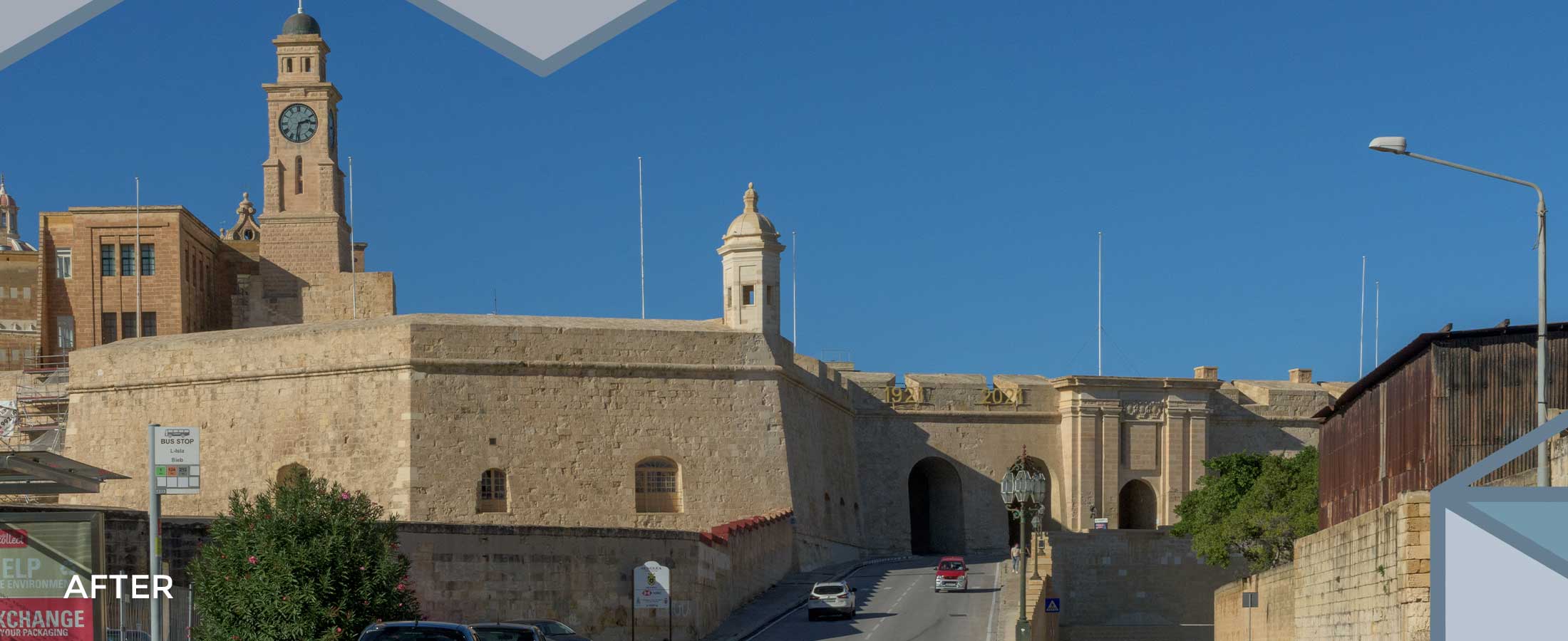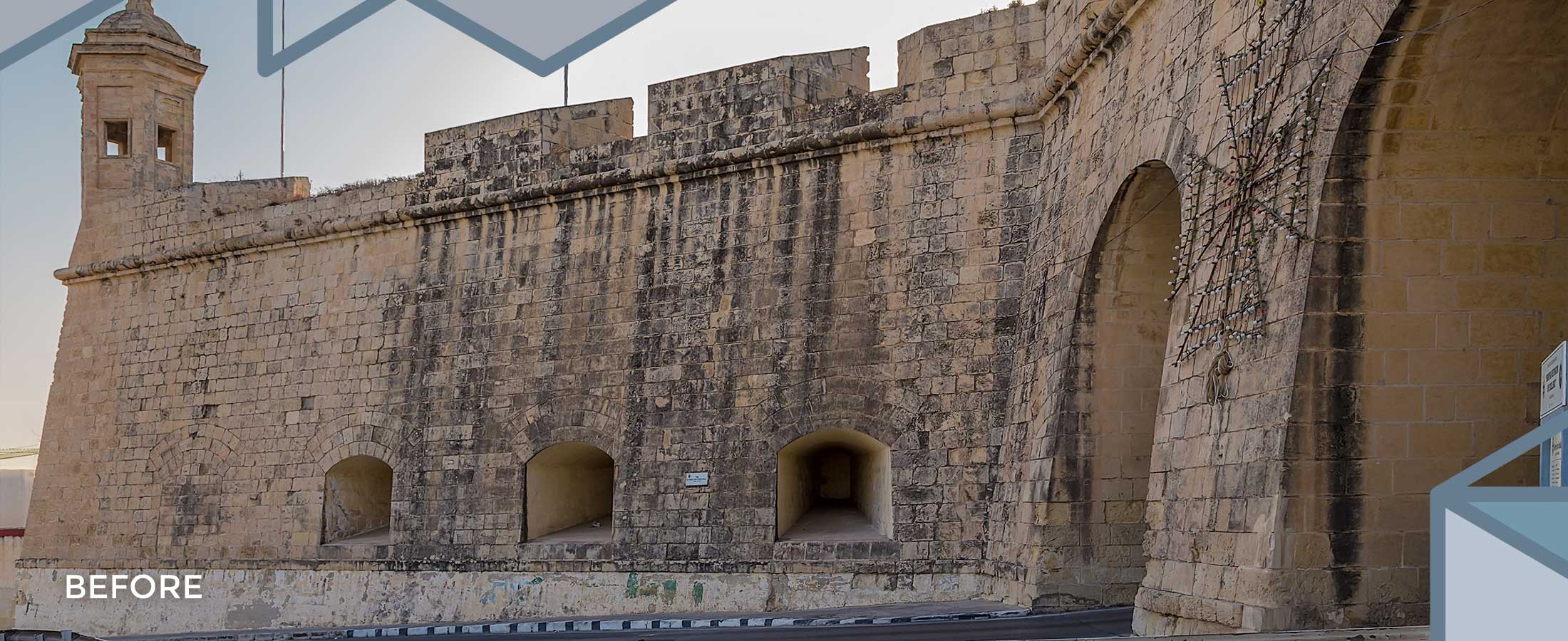Project Description
The land front fortifications of Senglea are a series of defensive that once spanned the front of the peninsula from Galley’s Creek facing Vittoriosa to French Creek facing Corradino Heights. The first fortifications were built as a result of the Ottoman attack of 1551 with Fort Saint Michael commenced a year later. The majority of the fortifications were built over the next decade, and although a quasi-barren city, Grand Master Claude de la Sengle honoured it with the title of Citta la Sengle or Senglea as better known. Modifications continued until the 18th century, although large sections of the fortifications in French Creek were demolished between the 19th and 20th centuries.
The city’s main entrance is through St. Anne’s Gate which is protected by St. Michael Bastion with its casemated walls and large echaugette (gardjola). A demi-bastion and a counterguard that had originally linked St. Michael Bastion facing Corradino were demolished in the 19th century. The prominent clock tower that was added in 1906 served to tell the time to all the workers and ships at the Admiralty’s dockyard. St. Michael Cavalier was originally Fort Saint Michael, which was demolished in 1921, of which only a small part of its base has survived. In 1924, the government decided to build a school and another section of the fortifications and most of the forts were lost. Further damage was sustained from aerial bombardment in World War II can still be seen on the curtain wall and the Macina. By the time, the inclined road leading to the city was restructured and a large arch was opened by St. Anne’s Gate to facilitate traffic. In later years, a second arch was added to allow the free movement of traffic in and out of the city. St. Anne’s Gate then became for pedestrians only.
Following the post-war repairs and reconstruction, little changes were made to these walls, other to some refurbishment in the late 1970s.
In April 2020, the Grand Harbour Regeneration Corporation initiated works at Senglea to regenerate this part of the city. These works were undertaken mainly consisted in the restoration and embellishment of the existing walls that were in a precarious state and dangerous in some parts, the clock tower and the gardjola.
The project was split into two phases; the first phase included the restoration and embellishment of the gates into Senglea and the restoration of the clock tower. These works included the restoration of 4,500m² of fortifications, and 2,000m² of the belvedere above, where stone masonry was cleaned from overgrown vegetation, stains, and biological growth while damaged stone features were repaired or replaced, depending on their condition. All restoration and replacement of timber and metal apertures were faithful to their original design.








The second phase was the regeneration of Piazza Giorgio Mitrovich, which from an overdue facelift was regenerated into an open space to be enjoyed by the locals and visitors to this historic city alike.
A brand new architectural lighting system will be installed to complement the existing lighting, street furniture, CCTV cameras and embellished with indigenous shrubs.













